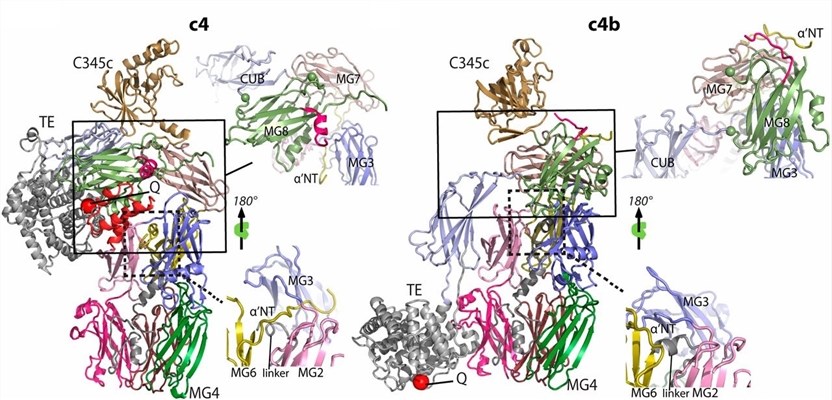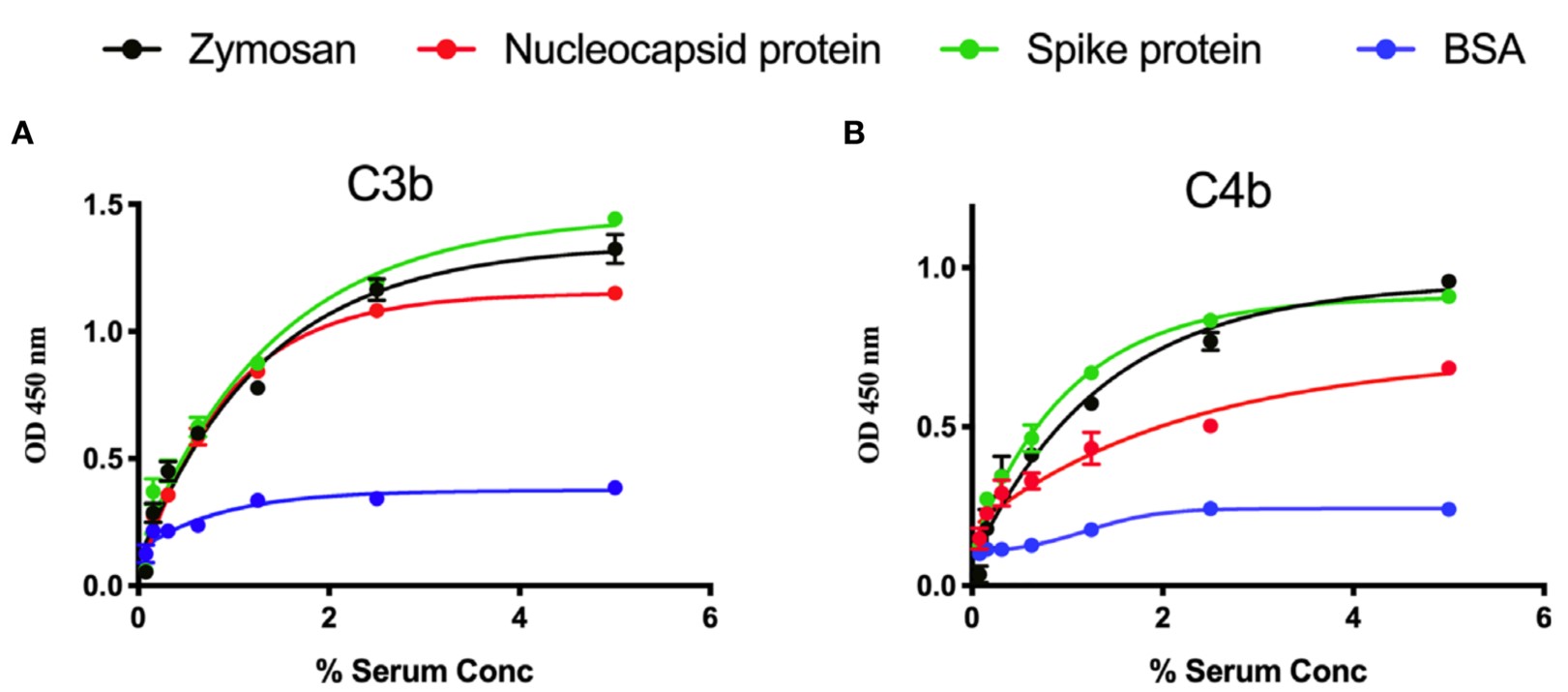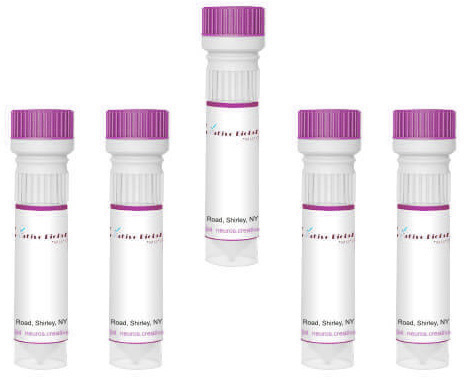Product List Background C4B Functional Service
Background
Normally, when the complement classical pathway was activated by the immune complex or the lectin pathway was activated by glycoprotein components on pathogen membrane surfaces, the proteases C1s and MASP-2 were activated, respectively. C1s and MASP-2 cleave the complement component 4 (C4) alpha chain into C4a and C4b fragments. C4a serves as an anaphylatoxin involved in local inflammation. C4b is an important member of the complement cascade that participates in the formation of the C3 convertases (C4bC2b) and C5 convertases (C4bC2bC3b).
Human C4b is a glycosylated polypeptide with 188 kDa, containing 12 domains (eight macroglobulin domains, a thioester domain, a CUB domain, fibronectin type III domain, and a C345C C-terminal domain). The cleavage of C4 into C4b is realized by the removal of the ANA domain, also named as C4a fragment. The activated C4b can covalently attach to hydroxyl or amine groups on pathogenic or target surfaces, forming the C3/C5 convertase enzyme complex. Surface-bound C4b has binding sites for the CCP module containing complement regulatory proteins, including C4b binding protein (C4BP), complement receptor 1, membrane cofactor protein, decay accelerator factor, and factor I. When binds to the complement regulatory proteins, C4b will be cleaved into C4c and C4d, resulting in loss of complement activation activity. The abnormality of C4b is related to complement dysfunction, immunodeficiency, and systemic lupus erythematosus.
 Fig.1 Structural transformations associated with the activation of C4 and its conversion to C4b.1, 3
Fig.1 Structural transformations associated with the activation of C4 and its conversion to C4b.1, 3
C4B Functional Service
A diverse selection of C4B-centric products is offered by Creative Biolabs, including anti-C4B antibodies, aptamers, ELISA kits, recombinant C4B proteins, and human C4B clone vectors. These regents are crafted to proficiently detect and analyze interactions involving antibody domains and C4B, contributing significantly to research focused on devising therapeutic approaches for various medical disorders.
 Fig.2 Visualization of C3b and C4b deposition on SARS-CoV-2 proteins.2, 3
Fig.2 Visualization of C3b and C4b deposition on SARS-CoV-2 proteins.2, 3
Researchers have identified that early and continuous complement activation significantly contributes to COVID-19 pathogenesis by fostering a proinflammatory state, essential for severe inflammatory responses to SARS-CoV-2. The lectin pathway (LP) facilitates complement C3B and C4B deposition on the virus, as shown through experiments with NHS, which revealed dose-dependent C3B and C4B deposition correlating with LP activation. Notably, the N-protein of SARS-CoV-2 directly engages the LP-enzyme MASP-2, triggering complement activation. Blocking LP with a monoclonal antibody against MASP-2 disrupts this mechanism, presenting a substantial therapeutic opportunity for severe COVID-19 treatment.
Creative Biolabs offers a comprehensive suite of functional services focused on C4B, including thorough interaction assessments and a range of specialized evaluations. These precisely tailored services are intended to assist clients in progressing their scientific investigations and clinical pursuits.
References
-
Mortensen, Sofia, et al. "Structural basis for the function of complement component C4 within the classical and lectin pathways of complement." The Journal of Immunology 194.11 (2015): 5488-5496.
-
Ali, Youssif M., et al. "Lectin pathway mediates complement activation by SARS-CoV-2 proteins." Frontiers in immunology 12 (2021): 714511.
-
Distributed under Open Access license CC BY 4.0, without modification.


 Datasheet
Datasheet Fig.1 Structural transformations associated with the activation of C4 and its conversion to C4b.1, 3
Fig.1 Structural transformations associated with the activation of C4 and its conversion to C4b.1, 3
 Fig.2 Visualization of C3b and C4b deposition on SARS-CoV-2 proteins.2, 3
Fig.2 Visualization of C3b and C4b deposition on SARS-CoV-2 proteins.2, 3
